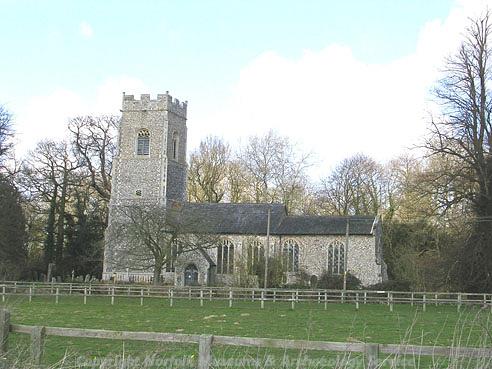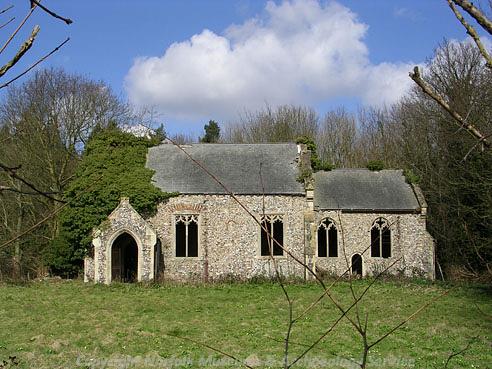This Parish Summary is an overview of the large amount of information held for the parish, and only selected examples of sites and finds in each period are given. It has been beyond the scope of the project to carry out detailed research into the historical background, documents, maps or other sources, but we hope that the Parish Summaries will encourage users to refer to the detailed records, and to consult the bibliographical sources referred to below. Feedback and any corrections are welcomed by email to heritage@norfolk.gov.uk
Lingwood and Burlingham is a fairly large parish, situated in Broadland, and it encompasses the village of Lingwood, and the hamlets of North and South Burlingham. Burlingham comes from the Old English meaning ‘the homestead, or farm, of a man called Byrla’. Lingwood, from the Old English meaning ‘a wood on a bank or slope’ is now the largest settlement in the parish.
There it little evidence for early occupation in the parish, a handful of finds, including a Neolithic axehead (NHER 31996), a flint flake (NHER 36613) and a Neolithic scraper (NHER 41698) have been found scattered throughout the parish.
The remains of a possible Iron Age and Roman settlement (NHER 18299, 20246, 20247, 20249, 29175, 29176) has been discovered near the hamlet of South Burlingham, by the interpretation of a number of metal detecting finds scatters, found over a number of years. Large numbers of Iron Age and Roman coins, pottery and other metalwork in the area around St Edmund’s Church (NHER 10287) suggest that some early settlement in the parish was focused on this area, and has gradually shifted its focus, probably during the medieval period when some settlement began to drift towards the edges of commons and greens.

St Andrew's Church, North Burlingham. (© NCC)
Saxon metalwork has also been found by metal detecting in the parish, including a number of Early Saxon brooches (NHER
17429,
20248,
25942), which suggests that settlement around South Burlingham and Lingwood continued to develop during the Saxon period. South Burlingham was already considered as a separate entity by 1086, but was a much smaller landholding than North Burlingham, although it also had a church, and St Edmund’s Church (NHER
10287) in South Burlingham has some 12th century work, as well as a 14th century wall painting depicting the murder of St Thomas Becket.

St Peter's Church, Burlingham drawn in 1822. The church is now in ruins.

St Peter's Church, Burlingham. (© NCC)
North Burlingham was a fairly substantial settlement in Domesday Book, and is listed as having a church. The medieval village of North Burlingham had two churches; St Andrew’s Church (NHER
8523) is mainly 14th and 15th century, whilst St Peter’s (NHER
8524), which also dates mainly from the 14th and 15th centuries, is now in ruins. The village itself is strung out along former greens and commons. An important 18th century wall painting was discovered inside a 17th century house in North Burlingham (NHER
25153). Burlingham Hall (NHER
14468), also in North Burlingham, was an early 19th century country house, demolished in 1952. Old Hall Farm (NHER
15481), in South Burlingham, contains a remarkable series of late 16th century wall paintings depicting various hunting scenes, which are of national importance. The wall paintings were found in a ‘long gallery’, a space created in the attics of the house, an interesting example of a member of the local gentry fitting the latest architectural ideas popularised in much larger houses into a rural farmhouse. Medieval coins, pottery and metalwork have also been found throughout the parish.
Systematic metal detecting in this parish has revealed much about its archaeological history, especially the presence of a probable settlement during the Iron Age and Roman periods, about which we might otherwise never have known about.
Sarah Spooner (NLA), 24 August 2005.
Further Reading
Brown, P. (ed.), 1984. Domesday Book: Norfolk (Chichester, Phillimore)
Mills, A. D., 1998. Dictionary of English Place-Names (Oxford, Oxford University Press)
Rye, J., 1991. A Popular Guide to Norfolk Place-names (Dereham, Larks Press)